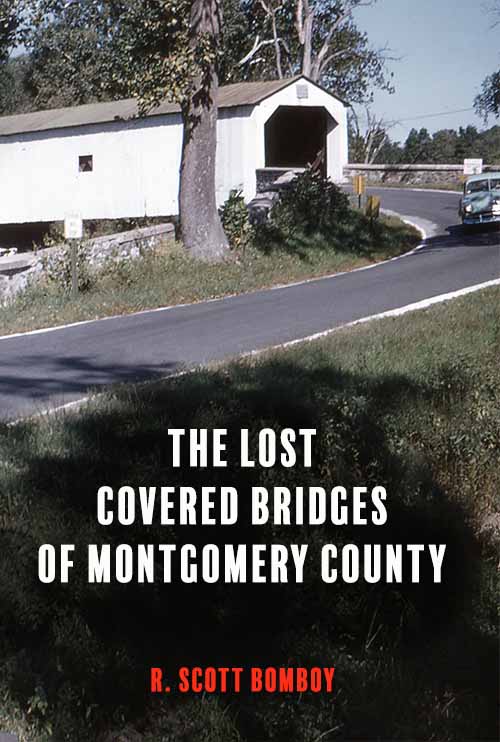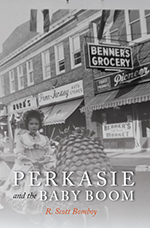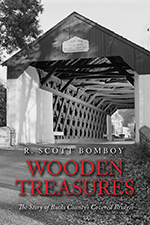Since its early days, Perkasie Borough has always been a town crazy about baseball. Its love for the game dates back to the 1880s, and it includes some incredible stories.
In Perkasie’s early days, the game was actually discouraged. In the Perkasie Central News of March 16, 1882, it was noted that mothers did not like the broken fingers and smashed noses brought home by their sons. The newspaper’s young editor, Samuel R. Kramer, wondered if the “rage for baseball” in Perkasie would ever go away. One of the first captains of Perkasie’s baseball club was Charles Baum, the future owner of the Perkasie Central News.

The sport of baseball played a prominent role in Victorian culture, as groups including churches, cigar factories, fraternal organizations, and Menlo Park fielded their own teams. In 1887, Perkasie sent a baseball team to Sellersville to challenge their more experienced opponents, losing 10-5 when the Perkasie side committed 17 errors and struggled to hit curve balls. Perkasie had other teams in the 1890s and organized a town squad managed by attorney Harry Grim in 1897.
Baseball games featuring regional teams soon became an attraction at Menlo Park, with Perkasie’s best players also playing for Menlo Park’s team. The Perkasie club improved greatly, and it took on regional African American teams such as the Ambler Giants, which the Perkasie team shut out 9-0 in July 1906 in a featured game at Menlo Park.
Perkasie Takes on the Philadelphia Athletics
In 1906, the Perkasie baseball team organized under the Perkasie Athletic Association’s sponsorship, with Cornelius F. Hendricks’ as its president. Hendricks had been a catcher on Norristown’s Fairmount team until he moved to Perkasie. By 1900, Hendricks started going blind after the early onset of glaucoma. But he had tremendous knowledge of the local baseball scene. Hendricks helped raise $2,000 for a new baseball park near Menlo Park, and the town’s leaders became shareholders in the Perkasie club. Perkasie had a strong team in the short-lived original North Penn League.

Perkasie’s old baseball field was on West Fifth Street near Menlo Park
On October 7, 1909, the Perkasie club challenged Connie Mack’s Philadelphia Athletics in an exhibition game in Perkasie. The Athletics had a 12-1 lead after five innings. Four Athletics players hit home runs, including Chief Bender. The final score was 16-3. But it didn’t matter to the players and residents. “To say that the country folk were mighty pleased with the Mackmen’s visit is putting it mildly,” said the Philadelphia Inquirer. The original North Penn League disbanded by 1912, and Perkasie would join the Montgomery County League a decade later, with Cornelius F. Hendricks as Perkasie’s biggest fan. By then, Perkasie had a regional reputation as a hotbed for amateur baseball.
Baseballs Made in Perkasie
Perkasie gained a baseball reputation outside of Bucks County by the 1920s. Edward and Walt Hubbert started the South Perkasie Baseball Factory in 1920 in the family’s house on Main Street. They advertised for remote workers, including children and the aged, to sew covers on baseballs sent to the Hubberts from their employers in Philadelphia. In 1936, the Hubbert baseball plant, in association with the A.J. Reach Company, extended its operations from South Perkasie to the former Leon Schwenk clothing factory on Chestnut Street. “The firm is nationally known and produces virtually the entire output of the higher grade of baseballs used in his country,” said the Central News.

“Hank” Eisenhart
Through the World War II period, E. Hubbert & Son sewed the covers on baseballs used in the major leagues, after receiving the cores from Chicopee, Massachusetts. By 1947, Spaulding was their customer, and the business was featured in the Saturday Evening Post and the Sporting News. In July 1947, Edward Hubbert Sr. caused a good deal of publicity in his Sporting News interview when he revealed there was no physical difference between the balls used in the American and National Leagues, despite claims made by players and fans.
While Perkasie made most of the baseballs used in the major leagues until the late 1940s, only one Perkasie Borough native appeared in a major league game. Local sports star Jacob Henry “Hank” Eisenhart from Fourth Street, a left-handed pitcher, was on a 30-day contract with the Cincinnati Reds and got the final out in their 18-0 loss to the Cardinals on June 10, 1944. He replaced 15-year-old Joe Nuxhall, the youngest player in major league history, who struggled in his debut.
The Pennridge Little League
Perkasie jumped into its current tradition of community Little League play in the early 1950s. Perkasie had a successful Junior Legion program dating back to the early 1930s and a strong Church League softball circuit.
In August 1951, the Perkasie News-Herald challenged the local community to sponsor teams. Former Junior Legion players also helped form the Pennridge Little League program.
By 1953, local businessman Samuel Peirce built a Little League field in Silverdale. A year later, the call went out for youngsters between 8 and 12 years of age to report to the Perkasie Borough playground. Perkasie residents James Groff, Russ Hollenbach, Jim Hackett, and Paul Snyder were the Borough’s representatives in the new venture. Perkasie hoped to field two teams, but 200 youngsters showed up for tryouts. In 1954, the Pennridge Little League started with four teams, sponsored by the Renner Brothers, the Jaycees, the Rotary and Samuel Pierce.

Opening Ceremonies for the Little League Field, 1958
In September 1957, arrangements were made for the Pennridge Little League to use the former Bux-Mont Riding Club grounds on Walnut Street as a permanent facility, with Perkasie Borough as its partner. On June 14, 1958, Foundation Day was celebrated at the new Walnut Street baseball field’s opening. In May 1960, the annual Little League parade was added to the opening day ceremonies.
When the Pennridge Little League celebrated its 30th anniversary in 1984, it had 500 participants, with 9 T-ball teams, 6 intermediate teams, and 8 teams of the Minor, Major, and Senior divisions.
A Perkasie Business Bounces Back
One of the most remarkable stories in the late 1960s was the resurgence of the baseball and softball business in Perkasie and the Pennridge region led by David W. Hubbert. Edward Hubbert Jr. died at the age of 33 after a brief illness in December 1947. He was a technical expert on baseball manufacturing. A year later, his father, Edward Hubbert Sr., passed away at the age of 61. In May 1949, Spaulding ended its contract with the Hubbert family and moved its stitching operation to Chicopee.

David W. Hubbert, the nephew of Edward Hubbert Sr., had been working at the baseball factory and he was experimenting with improvements in the construction of softballs as an extension of the family business. In 1950, David Hubbert met Mr. and Mrs. George Dudley Full, who were sports marketers. Over time, David Hubbert started his own small manufacturing company on Walnut Street in Perkasie, where local workers stitched balls. His big breakthrough was the development of a superior core for softballs, which changed the business by making the ball more durable.
During the 1960s, David Hubbert made many more improvements to his revolutionary softball, which was sold by Dudley Sports. In December 1968, the two businesses merged, and a year later Athlone Industries of New York bought Dudley Sports, with David Hubbert named as president of the Perkasie Division of Dudley Sports. By that time, Hubbert employed 100 workers in his Perkasie facilities, and Dudley Sports controlled 60 percent of the softball market, selling one million balls a year.



















